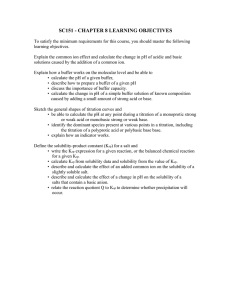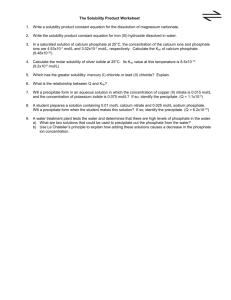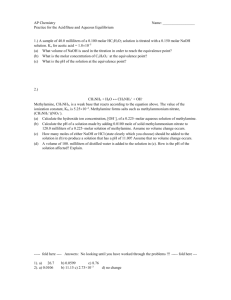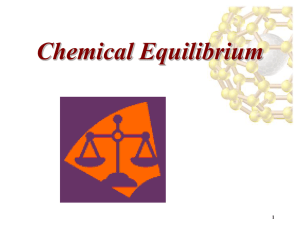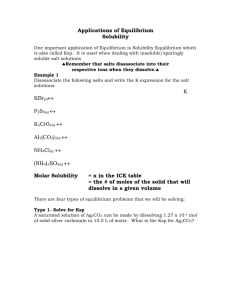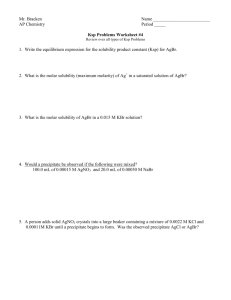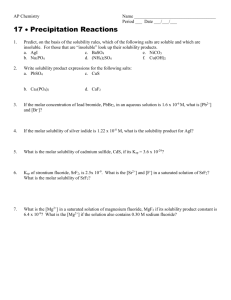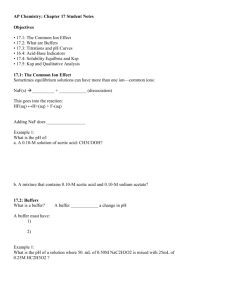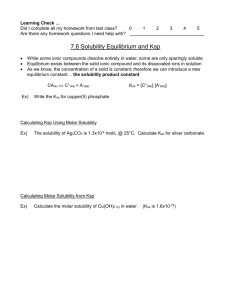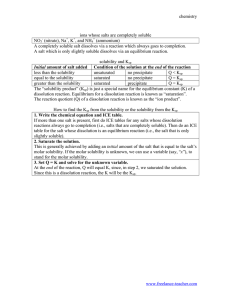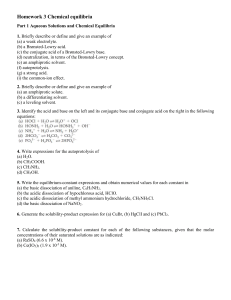Chemistry 106 Fundamental Chemistry Acid
advertisement
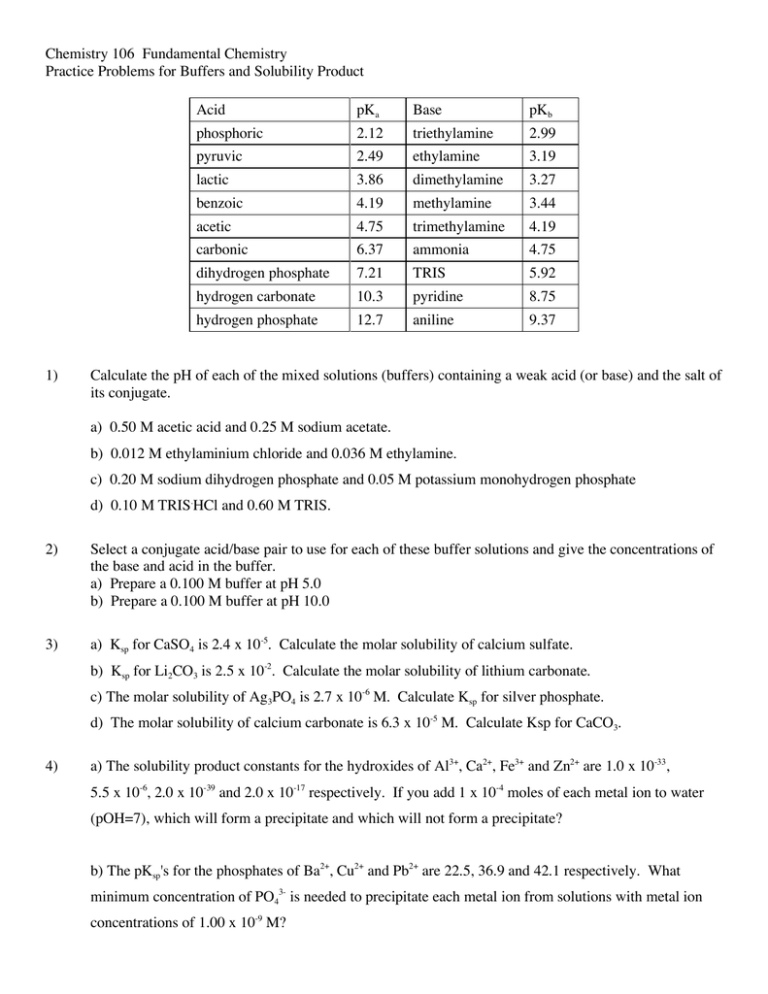
Chemistry 106 Fundamental Chemistry Practice Problems for Buffers and Solubility Product 1) Acid pKa Base pKb phosphoric 2.12 triethylamine 2.99 pyruvic 2.49 ethylamine 3.19 lactic 3.86 dimethylamine 3.27 benzoic 4.19 methylamine 3.44 acetic 4.75 trimethylamine 4.19 carbonic 6.37 ammonia 4.75 dihydrogen phosphate 7.21 TRIS 5.92 hydrogen carbonate 10.3 pyridine 8.75 hydrogen phosphate 12.7 aniline 9.37 Calculate the pH of each of the mixed solutions (buffers) containing a weak acid (or base) and the salt of its conjugate. a) 0.50 M acetic acid and 0.25 M sodium acetate. b) 0.012 M ethylaminium chloride and 0.036 M ethylamine. c) 0.20 M sodium dihydrogen phosphate and 0.05 M potassium monohydrogen phosphate d) 0.10 M TRIS.HCl and 0.60 M TRIS. 2) Select a conjugate acid/base pair to use for each of these buffer solutions and give the concentrations of the base and acid in the buffer. a) Prepare a 0.100 M buffer at pH 5.0 b) Prepare a 0.100 M buffer at pH 10.0 3) a) Ksp for CaSO4 is 2.4 x 10-5. Calculate the molar solubility of calcium sulfate. b) Ksp for Li2CO3 is 2.5 x 10-2. Calculate the molar solubility of lithium carbonate. c) The molar solubility of Ag3PO4 is 2.7 x 10-6 M. Calculate Ksp for silver phosphate. d) The molar solubility of calcium carbonate is 6.3 x 10-5 M. Calculate Ksp for CaCO3. 4) a) The solubility product constants for the hydroxides of Al3+, Ca2+, Fe3+ and Zn2+ are 1.0 x 10-33, 5.5 x 10-6, 2.0 x 10-39 and 2.0 x 10-17 respectively. If you add 1 x 10-4 moles of each metal ion to water (pOH=7), which will form a precipitate and which will not form a precipitate? b) The pKsp's for the phosphates of Ba2+, Cu2+ and Pb2+ are 22.5, 36.9 and 42.1 respectively. What minimum concentration of PO43- is needed to precipitate each metal ion from solutions with metal ion concentrations of 1.00 x 10-9 M?
